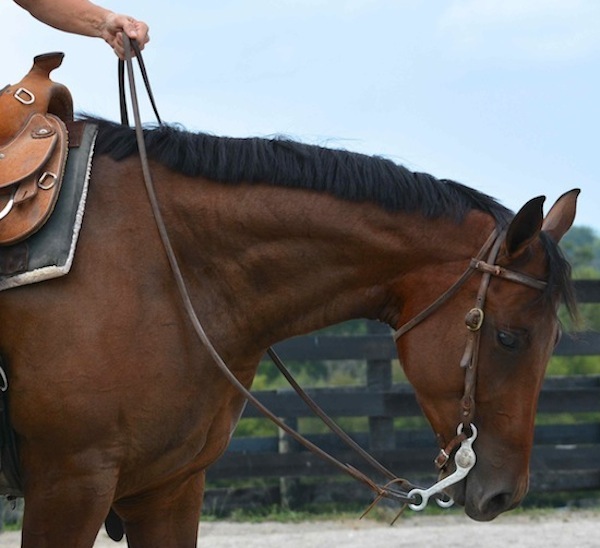How soft is soft? In horsemanship, it’s a tough question. World champion trainer Robin Gollehon says in all her years of giving lessons, “feel” is the hardest thing to teach a rider. The Versailles, Kentucky, horsewoman–a 35-year industry veteran–says many riders over-cue and are much too heavy with their hands and legs.

But how can you know just how soft “soft” really is?
To demonstrate, Robin likes to press gently on a rider’s arm.
“I’ll ask, ‘Can you feel that?’ Of course the rider says yes. ‘Well,’ I respond, ‘so can your horse!’ He can feel a tiny fly on his side, so he can certainly feel the reins lying softly against his neck, or your calf pressing gently on his barrel.”
You’ve probably heard this wisdom before—about using the lightest possible cues–but do you really practice it when you ride? It takes a conscious effort. And if you don’t make that effort, you’re dulling your horse’s senses.
“Using your reins too hard and abruptly, and bumping aggressively with your legs is like ‘yelling’ at your horse,” Robin explains. “Eventually he becomes oblivious to the yelling and you have to yell even louder.”
In other words, it becomes a vicious circle.
The solution?
Robin says to think in terms of installing a “button” on your horse for the cue in question. For example, do you want the button for softening at the poll to be a bump on the bit, or a subtle lifting of your hand? If the latter—and who doesn’t want that!–then that’s how you must always ask the first time you ask. If your horse doesn’t respond, you can up the cue’s intensity until he does, then go back and ask again softly until he understands that that “soft button” is what you want him to respond to. Only then should you move on.
“Ask softly in a way that makes sense to your horse,” says Robin. “Then give him a chance to respond correctly. If he does, reward him by stopping the cue and perhaps offering positive reinforcement–like a rub on the neck.
“But if he doesn’t respond, follow through with a stronger cue that makes sense to him–so he knows a consequence is coming if he doesn’t listen to the lighter cue in the first place.”
Robin adds that “soft” is a relative index that can change depending on the horse in question.
“Learn to ‘read’ your horse,” she stresses. “Most riders ride the same no matter what horse they’re on, or how he responds.”
This, she notes, is the exact opposite of riding with feel.
“As a trainer, I’ve ridden hundreds of horses. I can adapt my approach to each one in a matter of seconds by ‘listening’ to what he’s ‘telling’ me.”
To accomplish the same with your horse, “strive to feel what he needs in terms of the lightest possible cue, then ride him accordingly. By doing so and following the light-cue-first approach, you can actually make a dull horse more responsive over time.”
(MORE: Learn about Robin’s online “Trainer on Retainer” program, and if you’re headed for the show ring, check out her tips for showing on a shoestring.)






